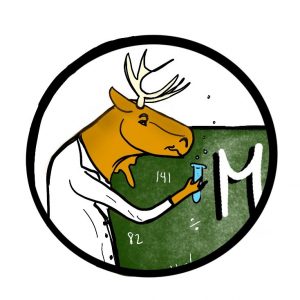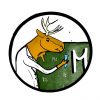References
Baglot, Kim. (Math Lab Co-creator). (2019). Image of Math Lab Beaker. [Digital Image].
Baglot, Kim. (Math Lab Co-creator). (2019). Image of Math Lab Microscope. [Digital Image].
Baglot, Kim. (Math Lab Co-creator). (2019). Image of Scientist Moose with Header. [Digital Image].
Baglot, Kim. (Math Lab Co-creator). (2019). Image of Scientist Moose with Moodle Clouds. [Digital Image].
Baglot, Kim. (Math Lab Co-creator). (2019). Image of Scientist Moose with Strong Shadow. [Digital Image].
Baglot, Kim. (Math Lab Co-creator). (2019). Math Lab Badges. [Digital Images].
Bloom’s taxonomy. (2019). Retrieved Jan 29, 2019, Retrieved from https://en.wikipedia.org/wiki/Bloom%27s_taxonomy
Boaler, J., & Dweck, C. (2016). Mathematical mindsets: Unleashing students’ potential through creative math, inspiring messages, and innovative teaching. San Francisco, CA: Jossey-Bass & Pfeiffer Imprints.
Brennan, K., & Resnick, M. (2013). Imagining, creating, playing, sharing, reflecting: How online community supports young people as designers of interactive media. In C. Mouza, & N. Lavigne (Eds.), Emerging technologies for the classroom, explorations in the learning sciences, instructional systems and performance technologies. (pp. 253-269). London; New York: Springer Science+Business.
Carrier, P. (2018). District directions 2023. Retrieved February 1, 2019, from http://www.sd6.bc.ca/About/District%20Directions%202023/Pages/default.aspx
Clarke, S. (2014). Outstanding formative assessment: Culture and practice. GB: Hodder Education.
DeLorme, C. M. (2018). Quilting a journey: Decolonizing instructional design. AlterNative: An International Journal of Indigenous Peoples, 14(2), 164-172.
Eyyam, R., & Yaratan, H. S. (2014). Impact of use of technology in mathematics lessons on student achievement and attitudes. Social Behavior and Personality: An International Journal, 42(1), 31-42.
Florian, L., & Beaton, M. (2018). Inclusive pedagogy in action: Getting it right for every child. International Journal of Inclusive Education, 22(8), 870-884.
Gedeborg, S. (2016). Designing social online math activities. Mathematics Teacher, 110(4), 272-278.
H5P.org. (2019). Retrieved January 23, 2019, from https://h5p.org/
Hughes, J. (2017). What works? research into practice: Meaningful making, research monograph #68, ISSN 1913-1100. Retrieved February 1, 2019, from www.edu.gov.on.ca/ eng/literacynumeracy/inspire/research/WhatWorks.html
Jenkins, H. (2009). Confronting the challenges of participatory culture: Media education for the 21st century. Cambridge, MA: The MIT Press.
Kafai, Y. (2006). Playing and making games for learning: Instructionist and constructionist perspectives for game studies.Games and Culture, 1(1), 36-40.
Kalantzis, M., & Cope, B. (2010). The teacher as designer: Pedagogy in the new media age. E-Learning and Digital Media, 7(3), 200-222.
Katz, J. (2012). Teaching to diversity: The three-block model of universal design for learning. Winnipeg, MB, Canada: Portage & Main Press.
Kunhertanti, K., & Santosa, R. H. (2018). The influence of students’ self confidence on mathematics learning achievement. Journal of Physics: Conference Series, 1097, 12126.
Lynch, K., & Kim, J. S. (2017). Effects of a summer mathematics intervention for low-income children: A randomized experiment. Educational Evaluation and Policy Analysis, 39(1), 31-53.
Mouza, C., Lavigne, N. C., & SpringerLink ebooks – Humanities, Social Sciences and Law. (2012). Emerging technologies for the classroom: A learning sciences perspective (1. Aufl. ed.). London; New York: Springer. doi:10.1007/978-1-4614-4696-5
Outhwaite, L. A., Faulder, M., Gulliford, A., & Pitchford, N. J. (2018). Raising early achievement in math with interactive apps: A randomized control trial. Journal of Educational Psychology, 284-298.
Pappas, P. (2010). A taxonomy of reflection: Critical thinking for students, teachers, and principals (part 1). Retrieved January 29, 2019, from https://peterpappas.com/2010/01/taxonomy-reflection-critical-thinking-students-teachers-principals-.html
Pedagogy – MoodleDocs. (2019). Retrieved January 23, 2019, from https://docs.moodle.org/en/Pedagogy
Province of British Columbia. (2018). BC’s New Curriculum. Retrieved February 11, 2019, from https://curriculum.gov.bc.ca/curriculum-updates
Province of British Columbia. (2017). Provincial graduation numeracy assessment. Retrieved February 1, 2019, from https://curriculum.gov.bc.ca/assessment/numeracy-assessment
Roque, R. (2012). Making together: Creative collaboration for everyone. Massachusetts Institute of Technology.
Schultz, D., Duffield, S., Rasmussen, S. C., & Wageman, J. (2014). Effects of the flipped classroom model on student performance for advanced placement high school chemistry students. Journal of Chemical Education, 91(9), 1334-1339.
Snyder, K. (2016). The effects of a summer math program on academic achievement. ProQuest Dissertations Publishing).
Stager, G. (2014). Seymour Papert – Inventor of everything. TEDx talks. Retrieved from https://www.youtube.com/watch?v=6-dFTmdX1kU
Stager, G. (2017). Eight Big Ideas Behind the Constructionist Learning Lab. Retrieved from http://dailypapert.com/eight-big-ideas-behind-the-constructionist-learning-lab/
Yeager, D. (2017). Social and emotional learning programs for adolescents. The Future of Children, 27(1), 73-94. Retrieved from https://www.jstor.org/stable/44219018
The New London Group. (1996). A pedagogy of multiliteracies: Designing social futures. Harvard Educational Review, 66(1), 60-93.
Turvey, K., & Pachler, N. (2016). Problem spaces. (pp. 113-130). Hoboken, NJ: John Wiley & Sons, Inc.
Wood Elementary (2018). School district 70 (alberni). Retrieved January 31, 2019, from https://www.sd70.bc.ca/Schools/SchoolList/plans/Documents/Wood%20School%20Plan%202017-18%20Numeracy.pdf

